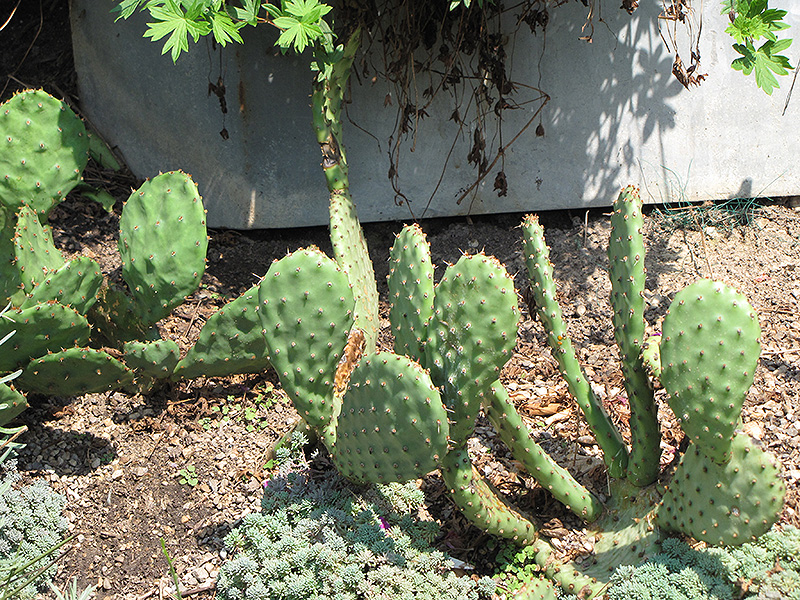Beavertail Prickly Pear Cactus
Opuntia basilaris
Height: 24 inches
Spread: 4 feet
Sunlight:
![]()
Hardiness Zone: 6b
Other Names: O. whitneyana, O. treleasii, O. humistrata
Description:
Interesting oval, gray-green pads are blushed with purple; vibrant fuchsia flowers in spring; the pads are mostly spineless with some near the top but the pads are protected by dark-brown glochids which will penetrate the skin; this plant is edible
Ornamental Features
Beavertail Prickly Pear Cactus is a member of the cactus family, which are grown primarily for their characteristic shapes, their interesting features and textures, and their high tolerance for hot, dry growing environments. As an 'opuntiad' type of cactus, it doesn't actually have leaves, but rather modified succulent stems that comprise the bulk of the plant, and which are designed to retain water for long periods of time. This particular cactus is valued for its upright and spreading habit of growth This plant features showy fuchsia flowers with yellow centers at the ends of the stems from early to mid spring.
This plant is primarily grown as an ornamental, but it's also valued for its edible qualities. The oblong mild plant is most often used in the following ways:
- Eating When Cooked/Prepared
- Cooking
Landscape Attributes
Beavertail Prickly Pear Cactus is a succulent evergreen plant with an upright spreading habit of growth. As a type of cactus, it has no true foliage; the body of the plant is wholly comprised of a linked series of spiny grayish green pads which are connected together to form the branches of the plant.
This plant will require occasional maintenance and upkeep, and should never be pruned except to remove any dieback, as it tends not to take pruning well. Stray segments or shoots can be carefully removed or thinned to control the overall form and spread of the plant. Deer don't particularly care for this plant and will usually leave it alone in favor of tastier treats. Gardeners should be aware of the following characteristic(s) that may warrant special consideration;
- Spiny
Beavertail Prickly Pear Cactus is recommended for the following landscape applications;
- Accent
- Mass Planting
- Rock/Alpine Gardens
- General Garden Use
- Naturalizing And Woodland Gardens
- Container Planting
Planting & Growing
Beavertail Prickly Pear Cactus will grow to be about 24 inches tall at maturity, with a spread of 4 feet. It grows at a medium rate, and under ideal conditions can be expected to live for approximately 20 years.
This plant should only be grown in full sunlight. It requires an extremely dry, well-drained growing location, and will usually die in standing water. It is considered to be drought-tolerant, and thus makes an ideal choice for a low-water garden or xeriscape application. Like most succulents and cacti, this plant prefers to grow in poor soils and should therefore never be fertilized. It is not particular as to soil pH, but grows best in sandy soils. It is quite intolerant of urban pollution, therefore inner city or urban streetside plantings are best avoided. This species is native to parts of North America.
Beavertail Prickly Pear Cactus is a fine choice for the garden, but it is also a good selection for planting in outdoor pots and containers. With its upright habit of growth, it is best suited for use as a 'thriller' in the 'spiller-thriller-filler' container combination; plant it near the center of the pot, surrounded by smaller plants and those that spill over the edges. It is even sizeable enough that it can be grown alone in a suitable container. Note that when growing plants in outdoor containers and baskets, they may require more frequent waterings than they would in the yard or garden.


